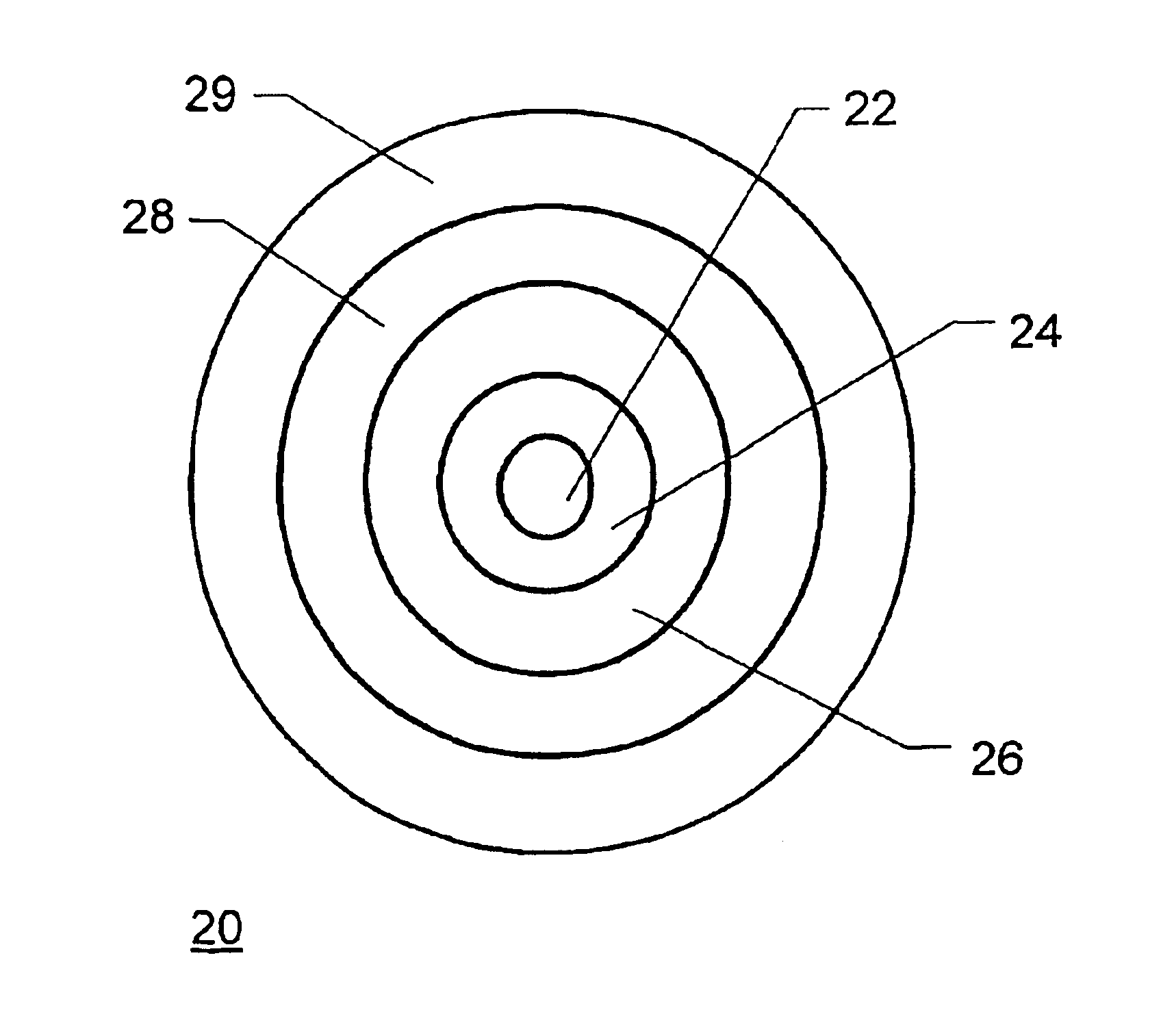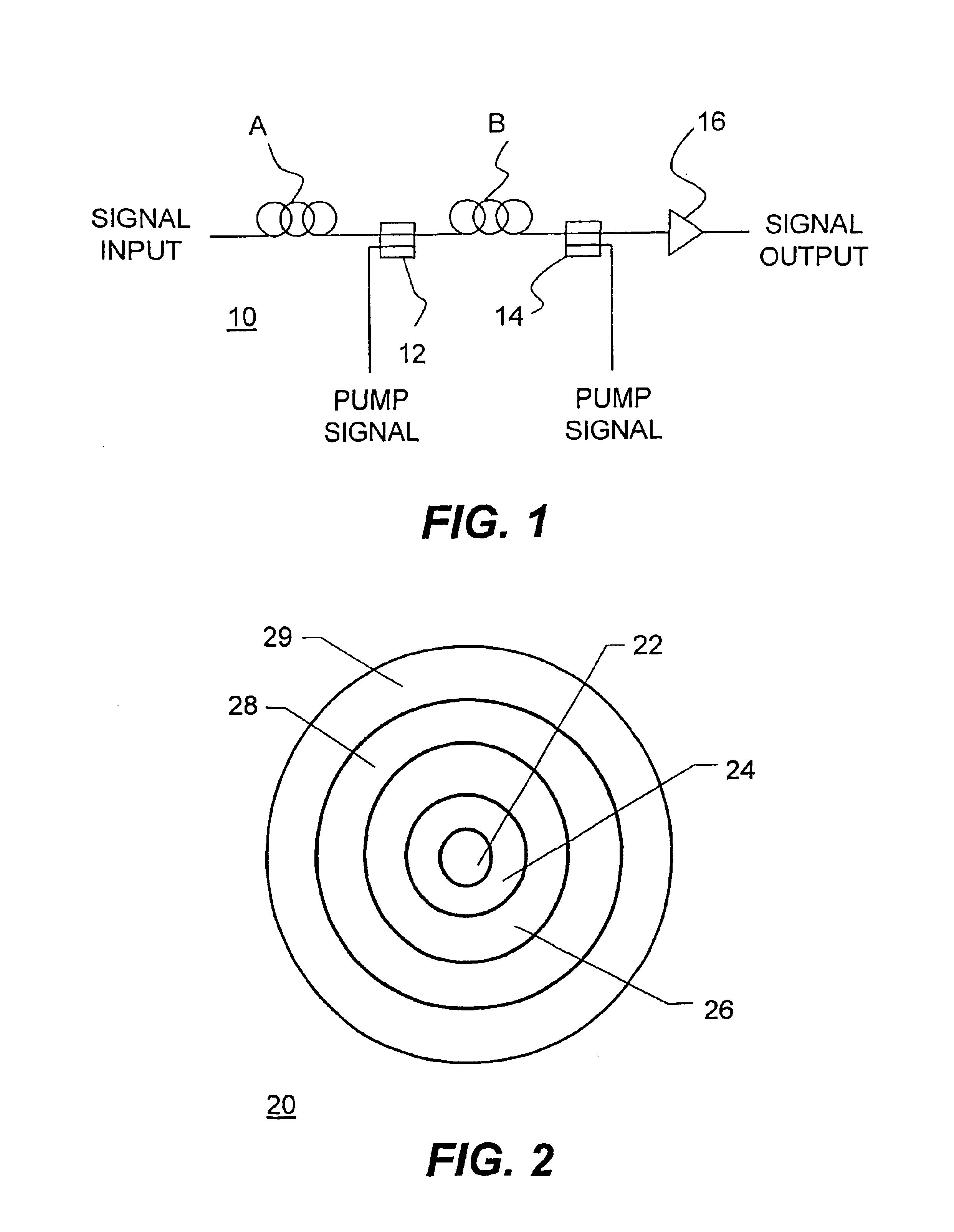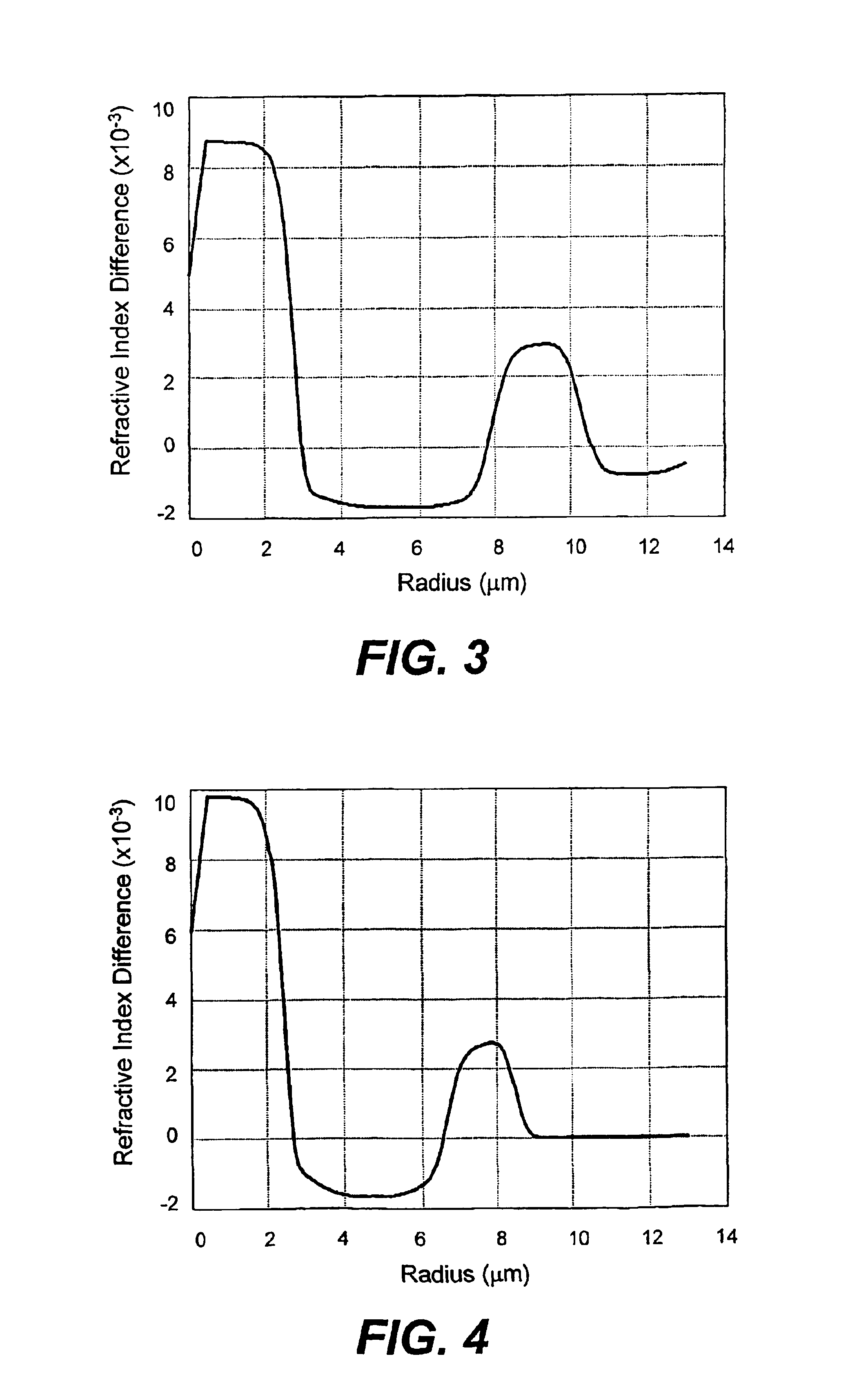Optical transmission link with low slope, raman amplified fiber
- Summary
- Abstract
- Description
- Claims
- Application Information
AI Technical Summary
Benefits of technology
Problems solved by technology
Method used
Image
Examples
example 1
[0085]As a first comparative example referring to Tables 1-4, an optical link is formed of Fiber A1, which is a conventional single-mode fiber according to ITU-T Rec. G652. Alternatively, Fiber A1 could be a Pure Silica Core fiber, which has in general a higher positive dispersion. Tables 1 and 3 list the optical performance of Fiber A1 when used as the sole fiber in the link. This standard single-mode fiber provides very high total dispersion that requires strong dispersion compensation. Also, this fiber has low Raman efficiency, which precludes distributed amplification.
[0086]Alternatively, Fiber A1 may be coupled with Fiber B1, which has an equal but opposite value of dispersion and dispersion slope. As shown in Table 3, the combination of these fibers A1 and B1 provides dispersion compensation within the link and a total slope along the link of about 0 ps / nm2 / km. However, to attain the high negative dispersion slope in Fiber B1, high fluorine content must be used, which leads to...
example 2
[0089]A second example for the present invention is a multi-fiber link with a first span of non-zero positive dispersion fiber. Table 1 lists optical characteristics of such conventional fibers as Fibers A2-A4. Examples of Fiber A2 are Corning LEAF™ and Pirelli FreeLight™ fibers. An example of Fiber A3 is Lucent TrueWave® RS fiber, and an example of Fiber A4 is Alcatel TeraLight™ fiber. When any of these fibers is used alone in a link, the link has a relatively high dispersion slope and low Raman efficiency.
[0090]In contrast, the use of one of Fibers B2 or B4 as a second span in the link helps to achieve desirable results consistent with the present invention. Table 4 shows the optical characteristics achieved by combining these fibers. The values in Table 4 are for the link alone (assuming a span length ratio of 1:1) and do not take into account the contribution of dispersion compensating modules upstream or downstream of the link. In general, the combined link can provide high Ram...
example 3
[0113]A third example for the present invention is a multi-fiber link with a first fiber span of non-zero negative dispersion fiber. Table 1 lists optical characteristics of such fibers as Fibers A5-A10. An example of a fiber in this category is the Pirelli DeepLight™ fiber. With any of these fibers used alone, or with hybrid fibers formed from Fiber A6 and Fiber B5 and from Fiber A8 and Fiber B6 as shown in Table 3, the link will have a relatively high dispersion slope and low Raman efficiency, making it undesirable for Raman amplification. Most of these comparative examples have a zero dispersion wavelength below 1600 nm, which makes them unsuitable for transmitting WDM channels in the L-band. The example of Fiber A7 does not have a zero dispersion wavelength below 1600 nm, but still has low dispersion (about −1.0 ps / nm / km) at 1600 nm, which is unsuitable for dense WDM channels in the L-band.
[0114]A fiber developed by Applicants that can be advantageously used in an optical link a...
PUM
 Login to View More
Login to View More Abstract
Description
Claims
Application Information
 Login to View More
Login to View More - R&D
- Intellectual Property
- Life Sciences
- Materials
- Tech Scout
- Unparalleled Data Quality
- Higher Quality Content
- 60% Fewer Hallucinations
Browse by: Latest US Patents, China's latest patents, Technical Efficacy Thesaurus, Application Domain, Technology Topic, Popular Technical Reports.
© 2025 PatSnap. All rights reserved.Legal|Privacy policy|Modern Slavery Act Transparency Statement|Sitemap|About US| Contact US: help@patsnap.com



